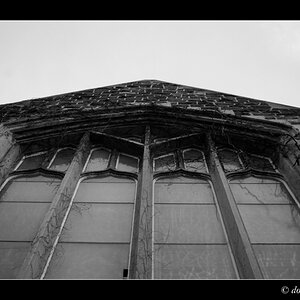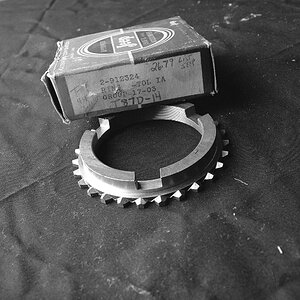danalec99
TPF Noob!
- Joined
- Mar 14, 2004
- Messages
- 8,345
- Reaction score
- 69
- Can others edit my Photos
- Photos NOT OK to edit
New Algorithm Foils Digital Forgers
Mon Aug 9, 3:03 PM ET Add Technology - NewsFactor to My Yahoo!
Mike Martin, science.newsfactor.com
Is seeing really believing?
Not in the era of digital imaging, says Dartmouth University professor Hany Farid, who, with graduate student Alin Popescu, has developed a mathematical technique that can discern a "real" digital image from one that has been tampered with.
"The technology to manipulate and change digital media is developing at an incredible rate," said Farid. "But our ability to contend with its ramifications is still in the Dark Ages."
Digital Prestidigitation
Photos have always been altered -- from airbrushed fashion models to aliens that land weekly in tabloids.
But while "regular" photos are hard to change without special dark-room expertise in altering negatives, computers make the process relatively simple.
"Commercially available software makes it easy to alter digital photos," said Farid, an associate professor of computer science. "Sometimes this seemingly harmless talent is used to influence public opinion and trust, especially when altered photos are used in news reports."
Brave New-merical World
In today's numerical new world, a photo of Saddam Hussein (news - web sites) standing with friends easily could be altered to show him shaking hands with Osama bin Laden (news - web sites).
Filmmaker Michael Moore is, in fact, buddy-buddy with his arch-nemesis President George W. Bush (news - web sites) in an altered photo for Moore's "Fahrenheit 911" movie poster.
By looking beneath the surface, the Dartmouth algorithm -- presented recently at the 6th International Workshop on Information Hiding in Toronto, Canada -- can determine whether someone has manipulated photos.
"With today's technology, it's not easy to look at an image and decide if it's real or not," says Farid. "We look, however, at the underlying code of the image for clues of tampering."
A digital image is a collection of pixels or dots. Each pixel contains numbers that correspond to a color or brightness value.
Altered photos inevitably contain altered pixels -- and altered numbers, or code.
The Dartmouth algorithm seeks evidence inevitably left behind after image tinkering. Statistical clues lurk in all digital images, and the algorithm seeks those that have been tampered with and therefore contain altered statistics.
"Natural digital photographs aren't random," Farid says. "In the same way that placing a monkey in front of a typewriter is unlikely to produce a play by Shakespeare, a random set of pixels thrown on a page is unlikely to yield a natural image. It means that there are underlying statistics and regularities in naturally occurring images."
Morse Case Scenario
The study of digital manipulation is not new -- in fact, it's an organized science, according to Xerox (NYSE: XRX - news) Corporation senior fellow Peter Crean, who said Farid's comment about the "Dark Ages" was "a little dramatic."
"The art of concealing and sending messages, called "steganography," has been around as long as people have had secret information to relay," Crean -- who works in Xerox's imaging innovation group -- told NewsFactor. "It's come a long way, however, since the days of invisible inks and encrypted Morse code delivered over secret radio frequencies."
Xerox holds "at least a dozen patents in the area of document authentication," Crean explained, noting that today's Xerox copiers can even foil sophisticated counterfeiters by shutting down the moment a fake bill is readied for copying.
Foiled today, foiling tomorrow said Farid, who explains that tomorrow's manipulators will inevitably outfox today's technology.
"There is little doubt that countermeasures will be developed to foil our detection schemes," Farid told NewsFactor. "Our hope, however, is that as more authentication tools are developed, it will become increasingly more difficult to create convincing digital forgeries."
Mon Aug 9, 3:03 PM ET Add Technology - NewsFactor to My Yahoo!
Mike Martin, science.newsfactor.com
Is seeing really believing?
Not in the era of digital imaging, says Dartmouth University professor Hany Farid, who, with graduate student Alin Popescu, has developed a mathematical technique that can discern a "real" digital image from one that has been tampered with.
"The technology to manipulate and change digital media is developing at an incredible rate," said Farid. "But our ability to contend with its ramifications is still in the Dark Ages."
Digital Prestidigitation
Photos have always been altered -- from airbrushed fashion models to aliens that land weekly in tabloids.
But while "regular" photos are hard to change without special dark-room expertise in altering negatives, computers make the process relatively simple.
"Commercially available software makes it easy to alter digital photos," said Farid, an associate professor of computer science. "Sometimes this seemingly harmless talent is used to influence public opinion and trust, especially when altered photos are used in news reports."
Brave New-merical World
In today's numerical new world, a photo of Saddam Hussein (news - web sites) standing with friends easily could be altered to show him shaking hands with Osama bin Laden (news - web sites).
Filmmaker Michael Moore is, in fact, buddy-buddy with his arch-nemesis President George W. Bush (news - web sites) in an altered photo for Moore's "Fahrenheit 911" movie poster.
By looking beneath the surface, the Dartmouth algorithm -- presented recently at the 6th International Workshop on Information Hiding in Toronto, Canada -- can determine whether someone has manipulated photos.
"With today's technology, it's not easy to look at an image and decide if it's real or not," says Farid. "We look, however, at the underlying code of the image for clues of tampering."
A digital image is a collection of pixels or dots. Each pixel contains numbers that correspond to a color or brightness value.
Altered photos inevitably contain altered pixels -- and altered numbers, or code.
The Dartmouth algorithm seeks evidence inevitably left behind after image tinkering. Statistical clues lurk in all digital images, and the algorithm seeks those that have been tampered with and therefore contain altered statistics.
"Natural digital photographs aren't random," Farid says. "In the same way that placing a monkey in front of a typewriter is unlikely to produce a play by Shakespeare, a random set of pixels thrown on a page is unlikely to yield a natural image. It means that there are underlying statistics and regularities in naturally occurring images."
Morse Case Scenario
The study of digital manipulation is not new -- in fact, it's an organized science, according to Xerox (NYSE: XRX - news) Corporation senior fellow Peter Crean, who said Farid's comment about the "Dark Ages" was "a little dramatic."
"The art of concealing and sending messages, called "steganography," has been around as long as people have had secret information to relay," Crean -- who works in Xerox's imaging innovation group -- told NewsFactor. "It's come a long way, however, since the days of invisible inks and encrypted Morse code delivered over secret radio frequencies."
Xerox holds "at least a dozen patents in the area of document authentication," Crean explained, noting that today's Xerox copiers can even foil sophisticated counterfeiters by shutting down the moment a fake bill is readied for copying.
Foiled today, foiling tomorrow said Farid, who explains that tomorrow's manipulators will inevitably outfox today's technology.
"There is little doubt that countermeasures will be developed to foil our detection schemes," Farid told NewsFactor. "Our hope, however, is that as more authentication tools are developed, it will become increasingly more difficult to create convincing digital forgeries."


![[No title]](/data/xfmg/thumbnail/31/31509-b8abaec96e6e375688e269bc89f47652.jpg?1619734858)

![[No title]](/data/xfmg/thumbnail/34/34073-71bff52a53b8313ff2bcccab6b05f9b8.jpg?1619736266)


![[No title]](/data/xfmg/thumbnail/41/41758-1a91d93383c843959cb160b7ac7e762e.jpg?1619739883)





